 SOME YEARS I JUST CAN’T BE THE VALENTINE GIVER I’D LIKE TO BE. Flu, deadlines, house guests, or no excuses, it just happens. So this year, on the way home from the Q train, I’m skidding into Natural Land on Flatbush Avenue to pick up some chocolate I’ve been eyeing from time to time. The flavors sound good and there’s a little notice on the outside of each package: “love poem inside,” it says, and sports an embossed heart-shaped seal as well as a cute little ersatz postmark and flavor-naming stamp. Definitely an effort has been made here, though not as classy as Mast Brothers’ paper wrapping. Still, I think how the oversized, artisanal-style Chocolove bar will look on Sweet Lover’s pillow tonight, Valentine’s Eve. Um mmm, good. Very intentional looking, getting a slight jump on The Day.
SOME YEARS I JUST CAN’T BE THE VALENTINE GIVER I’D LIKE TO BE. Flu, deadlines, house guests, or no excuses, it just happens. So this year, on the way home from the Q train, I’m skidding into Natural Land on Flatbush Avenue to pick up some chocolate I’ve been eyeing from time to time. The flavors sound good and there’s a little notice on the outside of each package: “love poem inside,” it says, and sports an embossed heart-shaped seal as well as a cute little ersatz postmark and flavor-naming stamp. Definitely an effort has been made here, though not as classy as Mast Brothers’ paper wrapping. Still, I think how the oversized, artisanal-style Chocolove bar will look on Sweet Lover’s pillow tonight, Valentine’s Eve. Um mmm, good. Very intentional looking, getting a slight jump on The Day.
Mae West’s husky voice comes to my mind’s ear: “Too much of a good thing is…wonderful.” Full of devotion and other emotion, I buy three. I wonder if each flavor has its own love poem or are they all the same.
Only as I am setting out the chocolate bars on Sweetie Pie’s pillow right under the reading light do I discover the shocking truth! These chocolates were not made in Brooklyn. Boulder, Colorado–whoa, that’s Wa-a-ay Outer Brooklyn. How can a founding team blogger of Brooklyn Artisan have made such a mistake? It may not even be fair-trade cocoa!
Desperately, I turn over each bar: It is the same story. “Belgian chocolate made from Javanese and African beans,” the Hazelnuts in Milk Chocolate bar confesses. Dark Chocolate bar murmurs, “African cocoa beans.” Coffee Crunch in Dark Chocolate hisses, “Dark semisweet chocolate with roasted coffee bean bits”– no hint of country of origin from this one, no naming of the transport (sailboat or otherwise), no high-minded bearded brothers.
My Sugar Love discovers me thus, with a lapful of rogue chocolate. He is happy! He tears open Coffee Crunch in Dark Chocolate and the outside wrapper falls aside. He offers me a row of squares. I find it is delicious, and he agrees. Crunching this guilty pleasure, I rescue the torn wrapper. It is a little hard to read “Sonet VI” [sic] by Robert Louis Stevenson, but we manage.
“O strange chance more sorrowful than sweet,” the poet wrote, but my minor misadventure has turned out just the opposite: There are worse things than crunchy chocolate crumbs in the bed.
(Photographs by Brooklyn Artisan Photo Pool)






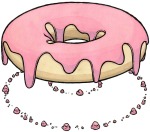
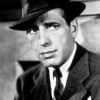


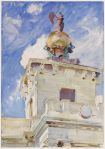


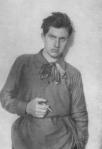



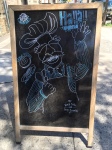
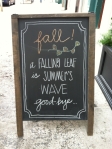



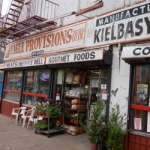

You must be logged in to post a comment.